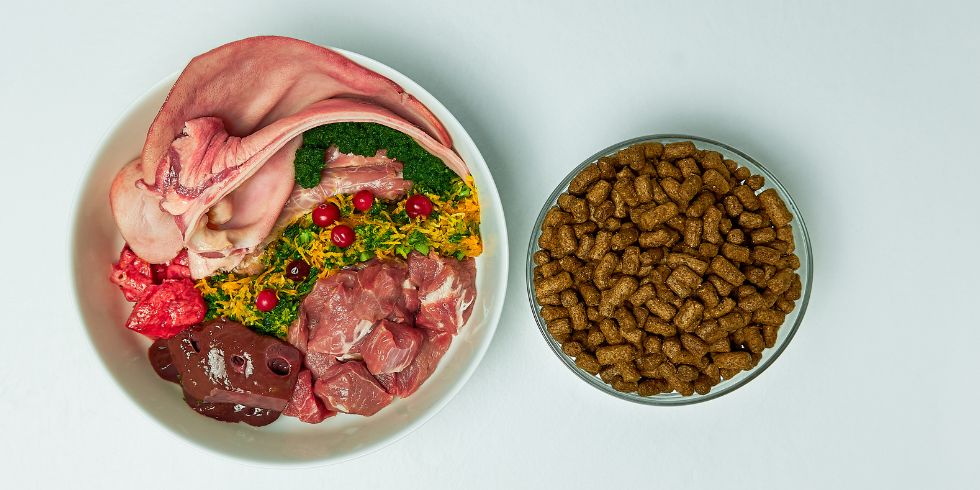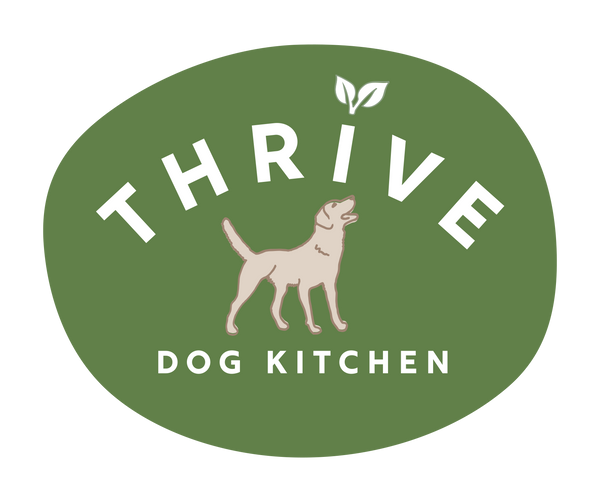
Can You Mix Fresh Food with Kibble?
Share
Can you mix fresh food with kibble?
Are you a kibble feeder that is curious about adding a bit of fresh food to their dog’s diet? Or are you a fresh feeder that wants to reduce their dog’s food bill by adding kibble to their bowl? Or is it something else?
Whatever the reason, the important question you want answered is – is it safe to mix fresh foods with kibble? The short answer is yes. When feeding a 100% fresh food diet is not feasible, which is completely understandable and ok, you can still include fresh foods into a kibble-based diet to give your dog a boost of nourishment.
Myths about mixing kibble and fresh food diets
When it comes to feeding your dog, you want to feed them the best, but there is a lot of information circulating around the internet and in vet practices as to what is the best. How do you know which is correct information and which is misinformation?
We have researched some of the leading experts in the field of canine nutrition that have debunked three of the most common myths about mixing fresh foods with kibble.
MYTH 1
Fresh food and kibble digest at different rates
Yes, fresh food and kibble are different. Fresh food is packed with whole food fat, protein, functional carbs, and moisture, while kibble is full of non-functional carbohydrates, low moisture and varying amounts of fat and protein.
There is the belief that because the two food types are so different it will affect the way your dog digests food and may have a negative impact. The reality, your dog’s gut, just like your own gut does not know the difference between fresh foods and kibble once it has reached the stomach.
More to the point, think about it, we have ham (meat) sandwiches (dry bread). No issues. Pâté on crackers. Whatever. Surely, if the digestion of meat and veg together was a tricky issue for guts, we would see some of this effect in our diet? For sure dogs eat it raw but meat, no matter is cooked or not, needs the same enzymes and acidity. In fact, raw meat is easier to digest, not harder.
MYTH 2
Mixing fresh food with kibble may cause an upset stomach
The reality, the change in the types of food can shock your dog’s system. It can even happen switching between kibble brands or switching from fresh foods to kibble. If you suspect your dog may initially react to the addition of new foods, then very slowly transition your dog. If they still react, continue to reduce the amount of new food until they do not react. Then slowly increase the amount. It can be a slow process, so be patient.
MYTH 3
May increase the risk of bacteria in the gut
While bacteria naturally grow in your dog’s gut, there is both good and bad bacteria. There is speculation that because kibble digests “faster” than fresh food it opens the gut for bad bacteria to enter. Dogs’ stomachs are designed to process some pretty yuck foods. It’s the high acidity that allows them to process these yuck foods quickly with little to no effect on their digestive system.
How to mix fresh food with kibble
There are several ways to mix fresh foods with kibble. Here are few ways that can make feeding fresh more affordable and convenient, whether you have one dog or more.
Reduce processed dog food and replace with fresh food ingredients
Start by replacing 20% (reduce the amount even more, if 20% is too fast of a transition for your dog) of your dog’s kibble with fresh whole foods. Adding such foods will make mealtime more attractive for your dog, plus they consume added nutrients. Feeding more than 20% seek the support of a canine nutritionist to ensure your dog’s diet is balanced of all the essential nutrients.
- Raw liver
- Raw heart
- Lean boneless venison muscle
- Salmon (tinned in fresh water is ok)
- Mussels
- Egg
Add fresh foods as a topper
Certain ingredients can be added to kibble that does not necessitate a reduction in the amount of processed food or fresh food ingredients. They are low-calorie additions that will not cause excess weight gain.
- Bone broth
- Water
- Sauerkraut
- Kefir
- Mushrooms
- Fruits and vegetables
Use fresh food as a base
If you want to make the transition to a fresh whole food diet, use it as a base. Top your dog’s fresh food with kibble.
Rotate between kibble and fresh during the day and/or throughout the week
Consider feeding your dog fresh foods a couple of times a week and kibble the other days. Alternatively, feed a small amount of kibble for their morning meal and fresh foods for their evening meal.
Create a weekly schedule to incorporate fresh food
I love this idea from Perfectly Rawsome. Once you have created a list of the fresh foods you would like to begin to add to your dog’s diet a helpful tool is a weekly schedule. It is a great way to plan and track the new foods your dog eats. You can note which foods they prefer over others. It also helps ensure that you frequently rotate through the fresh foods, so your dog enjoys the variety, doesn’t get bored and most importantly gets the most varied of nutrients.
Example of daily meals
-
Kibble, egg, blended green vegetables
-
Kibble, tinned salmon, liver, kefir, blueberries
-
Kibble, lean meat, bone broth, blended yellow vegetables
Mixing fresh foods with kibble or any processed foods is safe. However, you add fresh food into your dog’s diet, it will help their health and well being, leading them to thrive.
The important thing is to keep researching and seek support where needed and do what works best for your dog. Any amount of fresh food is better than none!
Ready to start adding fresh food into your dog’s diet? Get started with Thrive Dog Kitchen.
